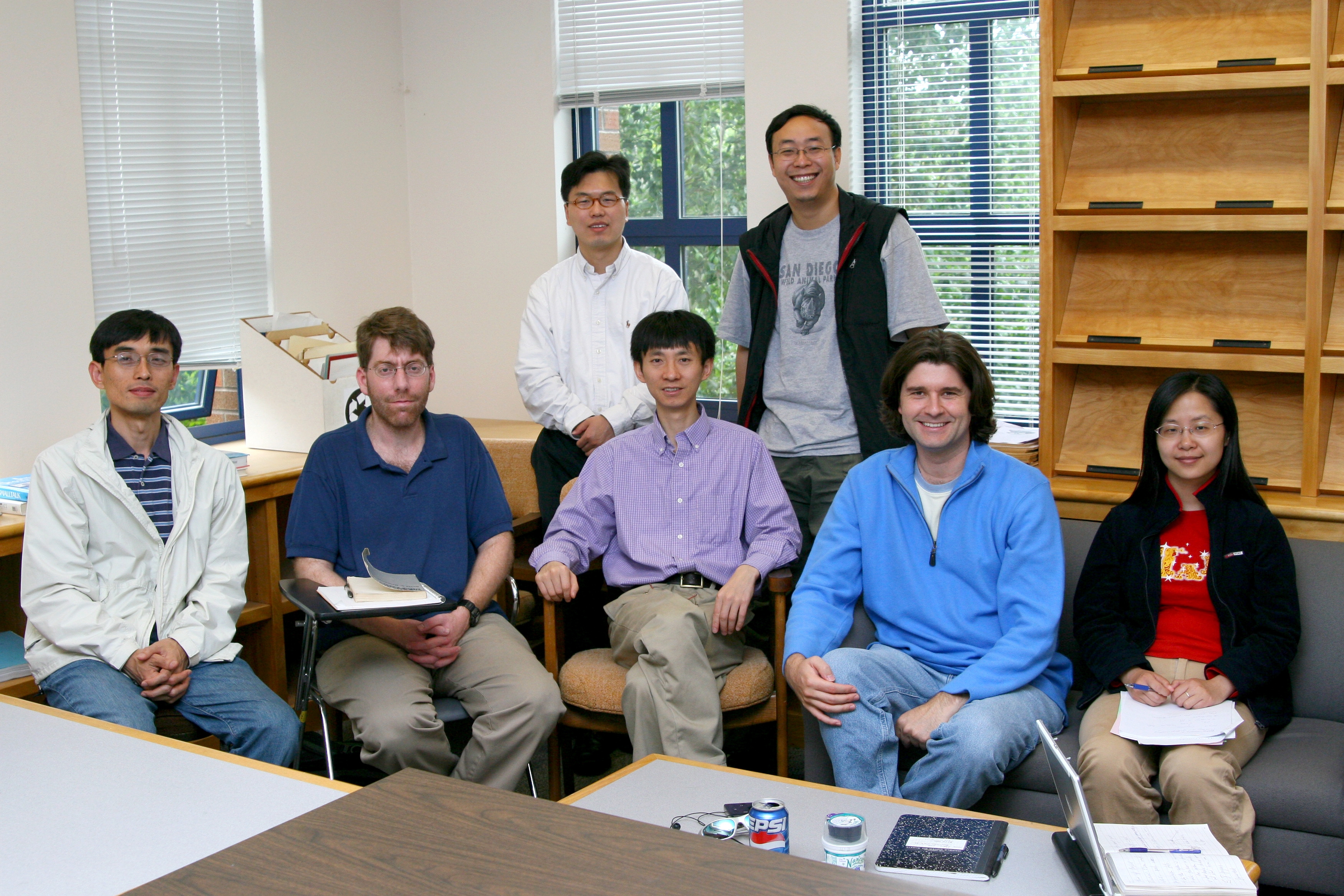AIM Laboratory
Introduction:
The Advanced Integration and Mining Lab (AIM Lab) was established in 2005 to conduct the data integration and data mining research at CIS of UO. There are large amount of data stored in different data repositories, such as databases, data warehouses, WWW and the emerging Semantic Web. They may use different structures (schemas) or semantics (ontologies) to describe their data even in the same domain. How to integrate those heterogenous data resources is still a big challenge to both database and Semantic Web research. Finding the relationships (mappings) is first step to do data integration and it may need human involvement. Then the mappings can be used for data translation or query answering across different data resources. Our lab is developing ontology-based information systems to help both general users and domain experts (e.g., biologists, neuroscientists) to integrate, process and analyze their data.
Data mining is a useful technique for finding interesting trends or patterns in those large datasets to guide decisions about future activities. Data mining has been used in many fields. In our lab, we have been interested in using data mining to study biomedical data, web data and network data. On the other hand, how to mine the interesting patterns (rules) across heterogenous data resources is also a very interesting topic to us. There can be some interaction between data mining and data integration tasks. For example, the generated data mining rules across different data resources can be used to guide data integration, and the integrated data can be used for finding more interesting trends and patterns.
Research Projects:
- OntoGrate is an ontology-based system for
interactive information integration. The goal is to help
human experts in multiple domains to interactively integrate information
that is heterogenous in both structure and semantics. Key innovations in OntoGrate include
broadening the typical scope of integration to span databases, XML
data, Knowledge bases and the Semantic Web; strengthening and
formalizing the derivation of mapping rules by introducing machine
learning and data mining techniques; and extending our inference
engine, OntoEngine, and first order ontology
language, Web-PDDL, to solve the problem of integration using
formal mapping rules. Along with OntoGrate, one sub-project is
on how to use inductive logic programming to learn complex mapping
rules. Another one is on how to use association rule mining to
find mapping rules. The collaboration with Dr. Jongwan Kim is to
construct a Personalized Ontology-based Anti-spam email System
(POAS).
- Neural ElectroMagnetic Ontology (NEMO) system addresses
the need for tools to support representation, storage, mining, and
dissemination of brain electromagnetic (EEG and MEG) data. NEMO is
a collaborative project with researchers at NIC (NeuroInformatics Center),
EGI (Electrical Geodesics, Inc) and Department of Psychology from UO,
and Learning Research and Development Center, University of Pittsburgh. We are developing several temporal
and spatial ontologies which are novel for the EEG/MEG
neuroscience field. We are are also building ontology-based temporal and
spatial databases for EEG/MEG data. We expect this
work to receive significant attention.
- Internet Routing Forensics (IRF) is a collaborative
project with researchers in Network Security Lab
and Advanced Network Technology Center. We are
extending several data mining techniques, such as classification
and clustering, to discover and analyze abnormal BGP (Border
Gateway Protocol) events, such as worms and blackout. This project
is being funded with a three year research grant (PI: Jun Li Co-PI: Dejing Dou, David Meyer) by NSF.
Software for download and online services:
We already set up a prototype of OntoGrate online service for querying relational database with Semantic Web ontologies. We will have software and complete online services be released to public finally. Currently, people can also try our inference engine, OntoEngine and OntoMerge online service for translating Semantic Web data. (Both OntoEngine and OntoMerge were firstly developed by Dejing Dou and his Yale colleague, Peishen Qi, and their advisor, Drew McDermott.)

Faculty members:
Dejing Dou
Jongwan Kim (visiting Associate Professor)
Student members:
Paea LePendu (Ph.D. student, who just received NPSC Graduate Research Fellowship)
Han Qin (Ph.D. student, who is supported as GTF by CIS Department)
Jiawei Rong (Ph.D. student, who is supported as GTF by CIS Department)
DongHwi Kwak (Master student)
Daya Wimalasuriya (Master student)
Mike Matloff (Undergraduate student, who will join our Ph.D. program in fall, 2006)
Former members:
Vikash Agarwal (MS' 05)
Amanda Hosler (BS' 06 with honor thesis)
Shiwoong Kim (MS' 06)
Darren Brown
Publications
Dejing Dou and Drew McDermott 2006. Deriving Axioms Across Ontologies. In Proc. Int'l joint conference on Autonomous Agents and Multi-Agent Systems (AAMAS'06) (short paper). pp. 952-954.
Dejing Dou, Paea LePendu, Shiwoong Kim and Peishen Qi 2006. Integrating Databases into the Semantic Web through an Ontology-based Framework. In Proc. 3rd Int'l workshop on Semantic Web and Databases (SWDB'06). pp. 54, co-located with ICDE 2006.
Dejing Dou and Paea LePendu 2005. Ontology-based Integration for Relational Databases. In Proc. ACM SAC'06 DBTTA Track. pp. 461-466. (A preliminary short version appeared in ODBASE2005 as poster paper, LNCS 3762, pp. 35-36.)
Jun Li, Dejing Dou, Zhen Wu, Shiwoong Kim and Vikash Agarwal 2005. An Internet Routing Forensics Framework for Discovering
Rules of Abnormal BGP Events. ACM Computer
Communication Review . Volume 35, Number 5, pp. 58-66, October 2005.
Dejing Dou, Drew McDermott and Peishen Qi 2004
Ontology Translation on the Semantic Web.
LNCS Journal of Data Semantics, Volume II, LNCS 3360, pp. 35-57. (invited submission)
send feedback to: dou AT cs.uoregon.edu
